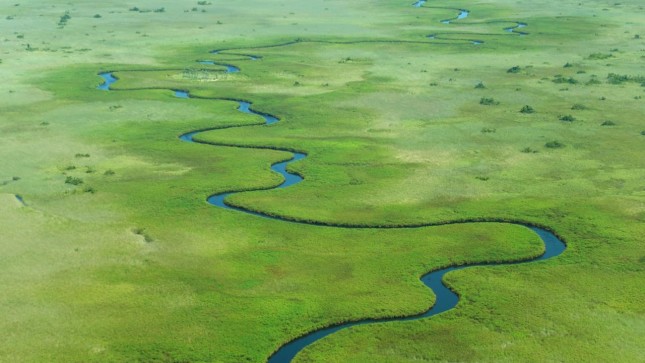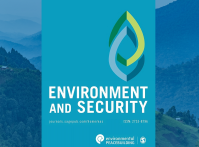-
USAID’s New Center for Water Security Signals Progress, But More is Needed

As the COVID-19 crisis grew this spring, the U.S. Agency for International Development (USAID) revamped its Water Office, renamed it as the Center for Water Security, Sanitation, and Hygiene, and added it to the Bureau for Resilience and Food Security, home to the Feed the Future Initiative.
Placing the Center for Water Security in the Bureau for Resilience and Food Security was a strategic shift. With 70 percent of freshwater use designated for agriculture, this move elevates water as an integral component of resilience and food security. Referencing water security in the Center’s name also highlights the need for water supplies to be managed sustainably and the role that water plays in resilience and peace.
Watershed protection and sustainable water management are increasingly urgent for agriculture and fisheries, climate change response, biodiversity, energy, and drinking water, sanitation, and hygiene (WASH). In this year’s World Economic Forum Global Risks Report, water insecurity is central to the top five global risks, from extreme weather events to biodiversity loss. The COVID-19 pandemic has further exposed fundamental weaknesses in our food and water systems. The importance of universal access to safe water and the need to protect the sources of that water for food production, human security, and economic prosperity has never been more apparent.
Elevating Water Security
The elevation of water security within USAID is an important acknowledgement that access to water plays a central role in a range of development challenges. But it’s a first step. The test for the Global Water Coordinator and Water Center will be how well they integrate the Agency’s well-known water, sanitation, and hygiene (WASH) work with investments in ecosystem health and freshwater resource management, resilience and climate change response, food security, energy development, and economic activity across the Agency within USAID Missions around the world.
The building blocks are in place. Fifteen years ago, Congress passed the bipartisan Water for the Poor Act, legislation that increased attention and funding for global safe water and sanitation and called for integrated water resource management. The 2014 bipartisan Water for the World Act further built on this framework, calling for programs to maximize impact and long-term sustainability. In the 2017 U.S. Global Water Strategy, USAID committed to improving sustainable access to WASH, the management and protection of freshwater resources, and water governance, echoing the global Sustainable Development Goals.
Integrated Water Security
While the integration of these elements in practice is still rare, the Resilient Waters Program in southern Africa is a good example of an integrated water security approach. There, USAID is funding efforts to build more resilient communities and ecosystems by improving both the management of transboundary natural resources and access to safe drinking water and sanitation services.
Our organization, World Wildlife Fund (WWF), is working in a similar way in the Kavango Zambezi Transfrontier Conservation Area (KAZA), a critically important wildlife corridor spanning five countries—Angola, Botswana, Namibia, Zambia, and Zimbabwe. As we support KAZA’s next chapter, partners are looking upstream with great concern, as a series of proposed hydropower and large-scale irrigation dams could irrevocably alter the flow of and access to water in the area. Weaving freshwater management into the regional effort is essential to preserve habitat for some of the most iconic species—including the world’s largest population of elephants—to build resilience to increasing water stress due to climate change, and support water access for communities and local economies.
With support from USAID and the U.S. Department of State, WWF and its partners are supporting inclusive transboundary water resource management and planning in the Kwando River Basin in KAZA’s headwaters. Tools such as conservation agriculture, a participatory and science-based basin health report card, and a blueprint for financing a sustainable Kwando Basin all help support decision-making that delivers for people and the planet. This kind of integrated approach, where stakeholders in every country work together for solutions at scale to address climate change, conservation, sustainable development and poverty, can be a template for future USAID programming.
Building Resilient and Sustainable Food and Water Systems
Current events signal how urgent it is to build more resilience and sustainability into food and water systems—and how intimately these systems are connected to human health. The Agency’s Environment and Natural Resource Framework, unveiled last year, provides direction to strengthen environmental linkages and should dedicate additional resources to USAID’s natural resource management work. USAID’s new standard indicators for water governance and resource management are also a start. These areas require increased attention and support. The new Center for Water Security and Water Leadership Council should drive a plan to advance integrated water security throughout programs, policies, results measurement, and learning.
USAID’s COVID-19 response is rightfully one of the new Center’s areas of immediate focus. However, the first pass we’ve seen of the Agency’s WASH COVID-19 response shows there is still work to be done. WASH programs are vital for emergency response, including the promotion of handwashing and hygiene practices. Yet the longer-term development impacts of COVID-19 also require urgent attention. The Agency should dedicate—and Congress should appropriate—supplemental funding for programs that both provide emergency assistance and address the broader economic effects of the crisis. For water, that includes funding to increase access to WASH, as well as improvements to water security and resource management.
USAID has elevated water security to better respond to challenges today, while helping communities and nature thrive for the long term. The new Center for Water Security, Sanitation, and Hygiene can lead the way.
Stephanie Cappa is the deputy director of policy and government affairs at the World Wildlife Fund, focusing on healthy forests, food, and freshwater systems for people and the planet.
Sarah Davidson is the director for water policy at the World Wildlife Fund, leading the design and implementation of policy initiatives and strategic partnerships to advance WWF’s vision of a world where healthy freshwater systems allow people and nature to thrive.
Sources: Global Waters, USAID, World Economic Forum, World Wildlife Fund.
Photo credit: Kavango-Zambezi Transfrontier Conservation Area, Courtesy of USAID.
 A Publication of the Stimson Center.
A Publication of the Stimson Center.






